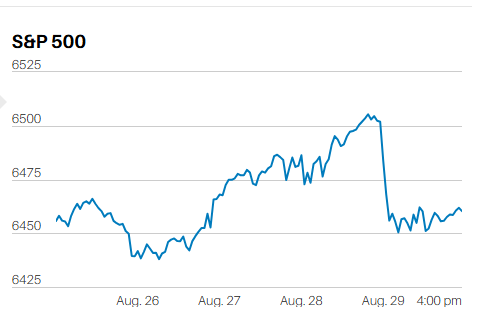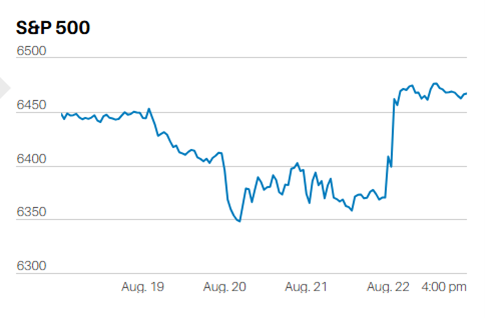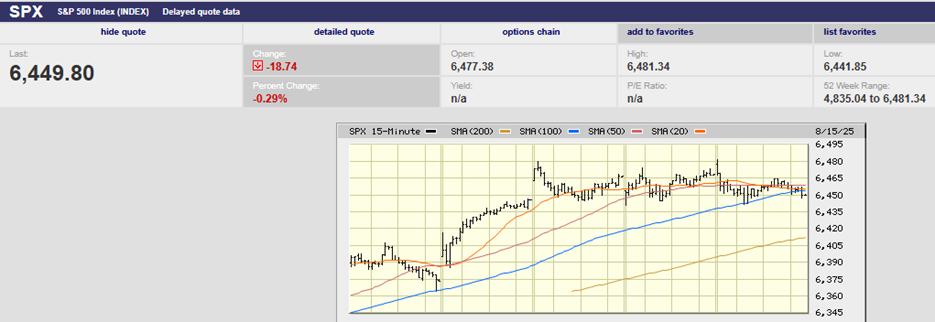Stocks are ownership in businesses

Market Update
The S&P 500 lost 5.8% last week, finishing Friday at 3674.84. The index breached the 3810.36 May 20th low Monday without a fight. It also fell below the descending trading channel in the process. It first dropped below the trading channel on Tuesday. It closed below it Thursday and Friday. Falling below the channel indicates a market accelerating to the downside. The Monday and Wednesday lows touched the bottom of the trading channel. Friday’s high also touched the lower band of the channel, now acting as resistance. (See the chart above).
How’s that for algo precision? Institutional money managers are puking out stock. They are reducing their exposure to a falling stock market to limit short-term losses. Their selling is accelerating. When the big boys are selling it’s best not to get in the way. Sundial Capital noted last week that there are five days since June 8th when more than 90% of the S&P’s stocks finished lower, according to Barron’s. Broad-based selling is often a sign that a bottom is near, temporary, or otherwise. Unfortunately, it can be near in time but not in price.
The market may put in a bottom in the next few weeks, but the bottom could be 12%-15% lower. We wrote last week, “Regardless of whether the yield curve inverts, the odds favor more downside for the S&P 500 this summer.” The S&P has fallen another 5.8% since we wrote that line last week. It now seems likely that the S&P will test support in the 3200 to 3600 range. A decline to 3200 at this point would be a clear signal that a recession is near. The S&P only needs to fall another 12.9% to reach 3200.
The type of lopsided selling noted by Sundial Capital often means a bear market rally is in the offing. Expect an oversold bounce this week. First resistance is 3800-3825. The bounce could touch the 20-day at 3970. A move back above 4,000 is unlikely though. Instead, expect the rally to fail. Norwood Economics believes it is likely we’ll see 3200 to 3500 sometime this summer. A recovery back to 4,000 is possible by year-end. The U.S. economy will need to avoid a recession. Earnings growth will also need to materialize. It is more likely that we finish the year about where we are now, call it in the 3600-3800 range. The long-term trend is still down regardless of whether we get a bear market rally in the next few weeks.
Markets are leading indicators. Earnings estimates haven’t fallen yet but they will. The stock market is likely pricing in reduced earnings right now. Analysts will catch up and lower their estimates in the next few months. The unanswered question is whether earnings will fall by a little or a lot. A recession later this year or early next now seems like the most reasonable base case. Inflation is raging, interest rates are rising, and an indebted economy is slowing rapidly. S&P 500 earnings estimates are $229 for 2022 and $252 for 2023. Twelve-month forward estimates are around $240. The S&P 500 12-month forward long-term price-to-earnings (P/E) average is 15.5 times, which would put the index at 3,720. The index would be at 3,200 at its long-term average P/E multiple if 12-month forward earnings are $206, less than the $208.53 in 2021 earnings. It will take a recession for earnings to fall to $206 on a 12-month forward basis.
Our sense is that downside risk is to 3,000-3,200 over the next six to twelve months if we experience a mild recession. The index is fairly priced now otherwise. It continues to be a stock pickers market.
Investing In A Bear Market
I thought I’d dispense with the economic section this week and go straight to investing. Folks are getting nervous. I’ve had some 401(k) participants calling to ask me what they should do about their losses. I’ve had some wealth management clients ask if they should make changes to their portfolio. My answer has been the same for everyone. Don’t make any changes at all if you are currently in a diversified portfolio that is appropriate for your long-term situation. Reacting to short-term market movements is a bad idea. Market timing doesn’t work. People are bad at guessing where the market is going. People are bad at picking bottoms. Too often folks bail out of their positions at exactly the wrong time.
A common comment from clients, prospects and acquaintances has been, “I’m worried the market is going to crash.” I’ve also heard, “I’m worried I’m going to lose all of my money.” I start by reminding them that stocks represent ownership in businesses. The stock market isn’t going to crash and stay down unless the American economy crashes and stays down. Investors will have much bigger things to worry about if that happens. You’ll need to make sure your generator works and that you have plenty of canned goods. Oh, and you’ll need your guns and ammo to defend your stash since society as we know it will have come to an end.
Stocks are ownership in businesses. The American economy grows over time as our population and productivity increases. Stock prices go up as profits increase. Profits increase as the U.S. economy grows. No one is going to lose their money permanently investing in the S&P 500. Wal-Mart, Coca-Cola, Caterpillar, Verizon, and Johnson and Johnson aren’t going anywhere. Neither are the many other high-quality companies that make up the S&P 500.
The risk comes if you allow there to be a mismatch between your assets and liabilities. The risk is that you don’t have enough liquidity when you need it. Liquidity is needed when you have near-term spending goals. Not having liquidity when needed means selling stocks, perhaps at the wrong time. A permanent loss of capital is a real risk if you dabble in low-quality companies. It isn’t much of a risk if you confine yourself to quality companies and maintain a diversified portfolio.
Norwood Economics is still buying. We bought a large medical device manufacturer last week. We bought a large drug company the week before. We bought two communication service companies and a financial service company a month or so ago. The sell-off in the stock market has allowed us to buy good companies on sale. They all have good to great balance sheets and pay above-average dividends. We are also adding to our existing stock positions for new clients. Finally, we are buying more for clients that aren't at a full position weight any longer due to declining prices.
Most of our clients are up 4% to 5% in their stock portfolios. Our newest clients are down single digits, depending on when we started buying for them. I don’t know whether our recent purchases will fall further before they find a bottom. I am confident that they will provide our clients with a satisfactory risk-adjusted return over the next few years.
Regards,
Christopher R Norwood, CFA
Chief Market Strategist











